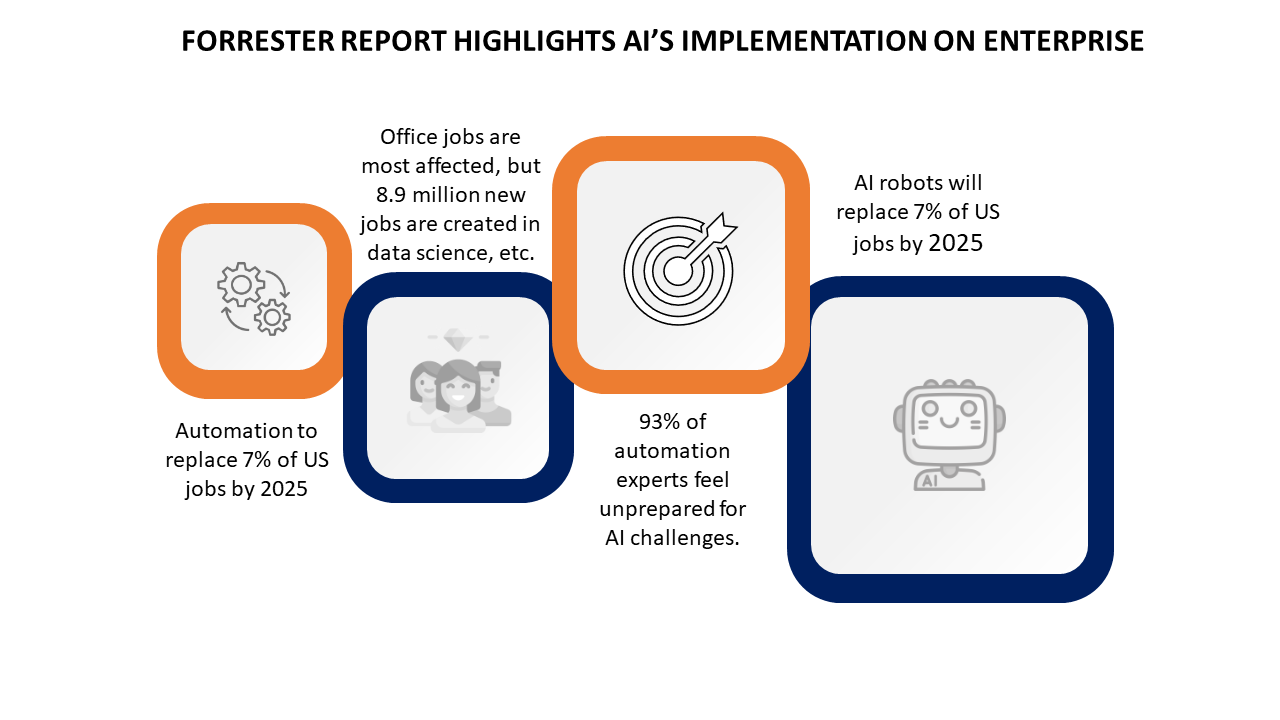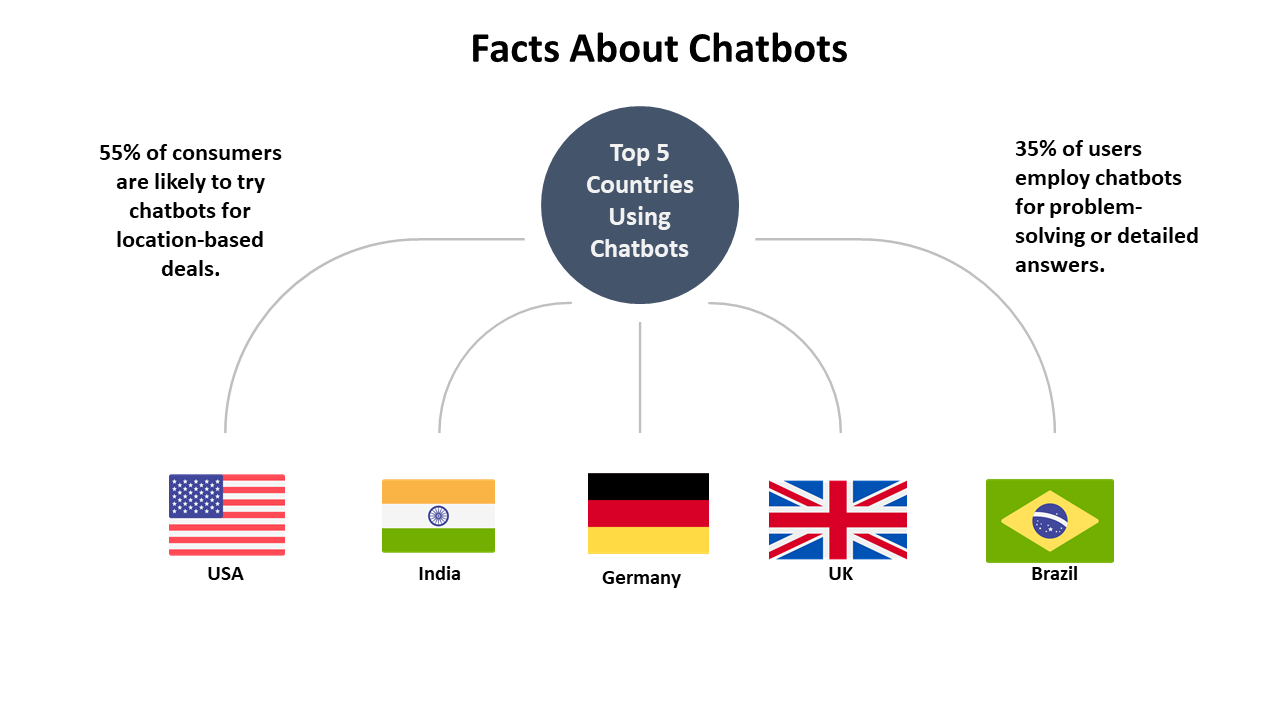Table of Contents
Conversational AI for customer service is already feeling the effects of recent AI advancements. It’s already clarified how leaders can take advantage of this chance to differentiate themselves from competitors and obtain a competitive advantage in our most recent research, State of AI in Customer Service 2023 research. According to our research, over the next 12 months, 69% of support executives plan to boost their strategic investments in ChatGPT-like AI LLM technologies. This would require a professional prompt engineering company to help businesses design well optimized prompts.
After witnessing the capabilities of tools such as ChatGPT, support managers are thrilled about the potential applications of artificial intelligence (AI) in customer service, including quicker, more reliable responses, and lower training expenses.
Conversational AI for customer service is transforming, alleviating annoyance caused by lengthy waits and impersonal interactions. Furthermore, imagine having chatbots answer your queries, effectively handle issues, and customize the user experience.

What Is Conversational AI?
Conversational artificial intelligence (AI) is a bunch of technologies that can perceive and answer discourse and text inputs. Furthermore, the term depicts utilizing AI-based apparatuses — like chatbot programming or voice-based partners — to associate with clients.
Messaging keeps on developing as a favored communication channel for clients, with social informing applications like Facebook Courier and WhatsApp Business accounts encountering colossal spikes in help demands. Informing and conversational AI work connected at the hip, and with the worldwide conversational AI technology market expected to develop from $8.24 billion in 2022 to $32.51 billion by 2028, it’s no big surprise that more organizations are executing this innovation.
Conversational AI is a type of artificial intelligence that empowers individuals to take part in a discourse with their computers. Furthermore, huge volumes of information, AI, and natural language processing accomplish this by copying human communication.
“It’s about having a system that’s able to carry on a conversation with a human user, usually to solve a task or answer the user’s question, in a way that imitates a human having the same conversation,” said Yves Normandin, a VP of AI technologies and products at customer experience tech company Waterfield Tech.
Generally, individuals might know remote helpers like Siri or Alexa, but conversational AI has also adopted various forms, including speech-to-text tools like Descript and Otter.ai, and refined chatbots like OpenAI’s ChatGPT.
Despite conversational AI technology and development, technologies like chatbots have customarily been seen by shoppers as “kind of lousy,” according to Bradley. “And people weren’t exactly wrong. You had to do a lot of painstaking work and thoughtful optimization to make them good.”
This insight has moved, with customers going to AI-like design chatbots and psychological wellness chatbots for help. Be that as it may, conversational AI is as yet restricted to performing explicit tasks and hasn’t verged on equaling human intelligence.
Explore How AI can Hep You Improve Your Customer Experience
How Conversational AI is Beneficial in Customer Service and Support
Although the conversational AI platform isn’t prepared to handle every customer discussion, it remains a powerful tool that your staff can utilize to enhance the support your team provides and the experience your customers receive.
The following are 10 possible advantages of adding conversational AI tools to your customer support technique:
-
Increments support inclusion:
AI permits your business to expand support inclusion past the standard working day. Conversational AI Or Chatbots and IVR frameworks can oversee essential solicitations, empowering customers to get help when it is advantageous for them. This is particularly handy for groups covering numerous time regions.
-
Quicker reaction times:
As well as getting reactions beyond business hours, conversational AI tools give reactions immediately, assisting customers with finding solutions all the more rapidly.
-
Versatility:
AI-controlled tools can handle various customer demands immediately, making it simple to develop your business without overpowering your group.
-
Brings down support costs:
Similarly, conversational AI tools can ease the heat off of your help group without the requirement for employing extra staff.
-
Further developed consistency:
Alongside information base substance and saved answers, the utilization of conversational AI tools can assist with guaranteeing that your group is giving reliable data across all channels.
-
Better onboarding:
Specialists can utilize AI to assist with drafting support reactions or question an inside AI information base assuming they have inquiries during training, assisting them with gaining trust in the line all the more rapidly.
-
Supports group efficiency:
When your team focuses on cases and tasks that require a higher level of expertise, they can reply to FAQs through self-service channels like virtual assistants and knowledge bases.
-
Increments customer commitment:
Conversational AI is fit for proactively contacting customers with customized messages. From item suggestions to criticism demands, AI can assist with keeping your customers drawn in and amped up for your brand.
-
Further develops customer experience (CX):
Customers need quick, exact, and customized help. While that is a difficult task, AI-improved channels can freely give this degree of help to less difficult solicitations, and for those that are more complicated, AI can furnish your group with extra data to make their occupation simpler.
-
Gives space to development:
While many help colleagues stress over being supplanted by AI, innovation can give space to additional intriguing tasks, building abilities, and gaining ground toward individual vocation objectives.
How To Implement Conversational AI In Customer Service
With a market size expected to reach $29.8 billion by 2028, conversational AI makes benefit-producing service centers that proposition customized, responsive, and compassionate customer encounters. The following are a couple of ways service groups are at present utilizing this innovation to upgrade their customer experience.
Further developing Chatbots
Developing enterprises like Apple and Amazon continually advance as per customer needs and don’t avoid putting resources into predominant help innovation.
Walmart, for instance, utilizes an AI-driven chatbot that helps with request following, and item suggestions and much of the time gets clarification on some pressing issues. At the point when it was carried out in Chile, it expanded the locale’s CSAT by around 38%.
70% of purchasers as of now favor chatbots for exact and quick reaction times and use them for service-related requests. Furthermore, as conversational AI keeps on improving, chatbots will be better at answering a wide range of requests – not simply point-and-snap solutions.
They’ll have the option to deal with a baffled customer, walk somebody through a befuddling cycle, or make master proposals given past co-operations with a current client. It will not supplant a human specialist, yet it will make your automated frameworks significantly more compelling.
Customizing Backing Connections
91% of customers like to shop with brands that give applicable proposals tailored to their requirements. Since cognitive AI frameworks recall past discussions, gain from customer collaborations, and use cognitive hardware to handle data, they can make customized proposals and proposition novel reactions.
Conversational AI solutions proactively address customer needs by understanding the context of a discussion, diminishing the requirement for extended clarifications and volatile cooperation. Dissimilar to generative AI tools, cognitive AI understands human language and communication, making smart reactions instead of fixing together available data.
Amplifying Functional Productivity
IBM’s research shows that organizations can set aside 30% on customer support costs by executing cognitive AI-fueled chatbots. Furthermore, the accompanying elements presented by conversational AI companies, lessen related costs, improve HR, and lift income and benefits.
Call Handling:
AI frameworks decrease average call handling times (AHT) by guiding calls to the most reasonable specialist. This further develops first-call goal (FCR) rates, making better encounters and less help tickets.
Specialist Help:
Conversational AI chatbots offer ongoing data and direction, diminishing the number of associations among customers and human specialists. This smoothes out the help interaction as well as saves time for specialists to settle perplexing or delicate issues.
Continuous Learning:
By learning from each connection and adjusting to customer needs, the best conversational AI chatbots continually upgrade their presentation over the long run.
Recognizing Income Opens doors
Cognitive conversational AI isn’t simply an issue solver; it’s likewise an open-door creator. Furthermore, organizations can upsell and strategically pitch by profiting from data accumulated from an AI framework.
For instance, not at all like standard chatbots that utilize work process rationale to answer customers, conversational AI is intended to have dynamic discussions. These communications are logged automatically for administrators to survey, giving business pioneers detailed descriptions of every customer experience.
This isn’t just helpful for retaining high-esteem customers, but it additionally presents the chance to offer to existing customers. Say a customer hits a detour with their ongoing membership and could truly utilize a superior item included at a higher level.
A bleeding edge support specialist probably won’t perceive this open door or transfer it to your outreach group. In any case, an AI framework would rapidly distinguish the customer’s requirements and caution your outreach group of a potential upsell opportunity.
Is Your Customer Service Ready For The Future? Talk With Our AI Experts
Use Cases Of Conversational AI For Customer Service
1-Accessibility services
Conversational AI can be utilized to make customer support more comprehensive and open to people with incapacities or unique requirements. Moreover, by offering tailored help and versatile solutions, organizations can guarantee that they take care of a different customer base and give a more evenhanded encounter.
A few instances of involving conversational AI for openness services can be:
- Text-based help for hearing-impaired customers
- Voice-based help for outwardly impaired customers
- Transparent Language for Cognitively Impaired Customers
2-Account management
Conversational AI can be a proficient tool for customer account management. Furthermore, the utilization of AI-fueled chatbots or assistant helpers can help customers with different account-related undertakings, smoothing out the interaction, and giving a more effective and easy-to-understand insight.
Some account management utilizations of conversational AI can be:
- Account creation
- Password resets
- Account updates
- Account connecting and integration
- Account cancellation or deactivation
3-Noting FAQs
Conversational AI can be utilized in customer service for noting FAQs. Furthermore, it permits organizations to handle normal customer queries rapidly and proficiently, giving exact and predictable reactions.
This application can assist with opening up human help specialists to focus on additional complicated issues, prompting a general improvement in customer service experience.
4-Authenticating customers
Another benefit of conversational AI in customer service is customer authentication. It can assist with checking the personality of customers by asking a progression of safety inquiries or mentioning explicit data that the account holder would be aware of.
This cycle guarantees that delicate customer information or activities are simply open to approved clients and maintains an elevated degree of safety in customer communications.
5-Booking and reservation help
Conversational AI can be utilized in customer service for booking and reservation help. Furthermore, it can assist customers with tracking down available choices for flights, inns, cafés, or occasions given their inclinations and necessities.
The AI framework can likewise direct customers through the booking system, assisting them with finishing the fundamental stages, and giving affirmation details once the reservation is made.
6-Intent recognition
One of the main purposes of conversational AI in customer service is intent recognition. Overall, by applying conversational AI services can examine customer queries or explanations to understand their basic reason or objective.
By precisely recognizing the customer’s intent, the AI framework can give significant reactions, guide the client toward suitable data or arrangement, or course the request to the right human specialist or division.
7-Multilingual help
As it can understand different dialects, conversational AI can be utilized in customer service for multilingual help. Furthermore, it can speak with customers in different dialects, empowering organizations to take care of a different and worldwide customer base.
By understanding and answering customer queries in their favored language, conversational AI guarantees a more consistent and customized help insight.
8-Order tracking and updates
Conversational AI can be leveraged in customer service for order tracking and order updates. It can give customers continuous data on the situation with their orders, for example, the ongoing area, assessed conveyance date, and any potential postponements.
Also, the AI framework can send proactive notices to customers concerning any progressions in their order status, guaranteeing they are kept informed all through the whole cycle. This application upgrades the customer experience by offering ideal, precise, and helpful admittance to order data.
9-Payment management
Conversational AI can help customers deal with their installments, for example,
- Setting up automatic installments
- Changing their installment strategy
- Settling charging-related issues
Moreover, conversational AI can assist customers with understanding their bills or solicitations and give direction on the most proficient method to make installments or resolve any errors.
10-Troubleshooting
Conversational AI solutions can help customers diagnose and determine normal issues they might experience with an item or service. By posing designated inquiries and investigating customer reactions, it can direct clients through essential troubleshooting steps, give accommodating tips and ideas, or escalate more intricate issues to human help specialists. Thus, it further develops the customer venture.
The Importance of Human Touch in AI-powered Customer Service
The desire to continuously provide the crucial human touch in Conversational AI and digitalization is at odds with one another. Around the world, chatbots, automation, and AI created by an artificial intelligence development company are providing solutions to customer care teams’ and customers’ problems. That is, it would appear.
Indeed, according to 64% of customers, businesses no longer value the personal aspect of the customer experience. (This is still in the early stages of the application of bots and AI.)
Poor AI implementation of client-facing technology can undermine the human element as well as the entire customer experience, from confused bots to ridiculous automation.
Thus, how can you make sure that you’re utilizing technology efficiently while maintaining the desired human element in your customer service?
The Human Element
In Conversational AI, the human touch is defined as treating consumers with the decency, adaptability, and empathy that they deserve. Although technology is effective, it frequently falls short on all these small service fronts.
Customers expressly desire “better human service” in up to 40% of cases.
It follows that people expect a human touch to be woven throughout their customer support encounters. Why? Since emotions influence how people behave and make purchases.
The emotional intelligence of the representative makes a huge difference when consumers get in touch with businesses. Humans are the only ones who can recognize emotional indicators and modify their communications accordingly, like by upselling to a committed client or soothing an irate one.
Increasing Digitization
As unfortunate as it is, human service is unpredictable by nature. Human agents cannot function consistently and efficiently like machines. They cannot take emotion out of the equation either. (After all, customers sense human touch in an interaction with a service provider through their emotions.)
In terms of customer service, human beings are flawed. People make mistakes, become angry, and grow weary of hearing the same old questions and responses. Digitalization then finds its place here.
Routine customer support tasks are becoming increasingly more frequently performed by technology. Furthermore, it’s been projected that by 2025, customer service automation will replace human intervention in 85% of support contacts. Customer care is becoming increasingly digitalized.
Technologies That Cause Disruption
Three new players in the Conversational AI for customer service space are chatbots, artificial intelligence, and automation. Overall, the three major disruptors can handle a colossal amount of customer service. One example of automation is directing clients to the appropriate location.
In general, it involves automating the procedures involved in keeping clients on board, gathering and processing their data, doing administrative duties, sending out triggered communications, and more.
AI is currently learning about your clients. Analyzing their needs and desires generates new depths of understanding.
Chatbots are the talk of the tech community. In place of a human agent, you are using bots to communicate with your customers, and they work well at it.
In actuality, these technologies are all quite good at what they do.
An Uneven Digitalization
The issue is that technological advancements cannot completely replace human customer care.
Chatbots and other software built for human interaction are unable to replicate the subtleties of human interaction. Intelligent chatbots are not immune to challenges.
It’s possible that they could mimic kindness. They can be trained to be courteous, and they are not easily agitated by irate clients. However, a lack of empathy and adaptability will offend more than one person when respect is insufficient.
Starting with adaptability.
Client assistance Your agents’ ability to “bend over backwards” to assist consumers is crucial to their satisfaction. Your team can overcome obstacles and come up with workable solutions.
Regrettably, unlike rules that automata and rule-based chatbots require to operate, flexibility is not something that can be produced by adhering to predetermined guidelines.
Insufficient Empathy
And there’s also empathy. As evidenced by the rise of sentiment analysis, advances in AI have made it possible for chatbots to comprehend emotions.
Though they are starting to recognize unhappy, furious, joyful, and delighted consumers, chatbots are yet unable to react appropriately.
A chatbot cannot provide emotional understanding; it can only robotically apologize and offer a refund to an irate customer. This may not satisfy the customer; rather, it may come off as contemptuous of their circumstances and sentiments, which would be a poor customer experience.
Human-AI collaboration is still required, even though technology can assist in keeping an eye on the general tone of consumer interactions.
The Foundation Of Humanity In The Digital Workplace
This does not imply that you should remove your automation software, disconnect your AI, and discard your chatbot. After all, they have a positive impact on both your team and your clients.
Finding a balance between digitalization and the human touch is crucial.
The key to striking this balance is realizing that Conversational AI for customer service technology are enhancer, not a substitute, for your human staff. Digitalization and cutting-edge new technology don’t have to replace the human touch.
You may make use of technology’s advantages without transforming the customer service apple cart.

Future Of Conversational AI
The field of conversational AI, which underpins voice-activated gadgets, virtual assistants, and chatbots, has advanced significantly in recent years. It is a basic component of our digital interactions now, not a novelty. It’s obvious that conversational AI has intriguing trends and forecasts in store for the future of AI, ones that will influence how we interact with technology going forward.
1. Better Interactions Across Modes
The future of conversational AI is multimodal. In the future, artificial intelligence solutions companies will be able to comprehend and react to a wide range of inputs, including text, voice, images, and even gestures.
This will go beyond text-based chatbots and voice assistants. Consider having a discussion with your virtual assistant where you can ask it questions via hand gestures, pictures, or voice commands all seamlessly blended into one.
2. Hyper-Personalization
Conversational AI is working on its capacity to appreciate explicit users. Users’ inclinations, schedules, and even feelings will be increasingly perceived by AI frameworks.
Customized content suggestions, item proposals, and necessities explicit assistance are only a couple of instances of the significant and context-mindful collaborations that will result from this degree of personalization.
3. Solutions Tailored to Explicit Enterprises
Conversational artificial intelligence is tracking down use in various sectors, including web-based business, banking, and healthcare. AI frameworks made particularly for these fields ought to be available later on.
AI chatbots, for instance, can assist with clinical requests and arrangement planning for the healthcare business, while monetary foundations can utilize AI to give more viable customer service and monetary direction.
4. Consistent Multilingual Capacities
As worldwide communication turns out to be progressively significant, conversational AI will keep on separating language boundaries. AI-controlled interpretation and translation will be more precise and consistent, empowering individuals from various semantic foundations to convey easily.
5. Voice Commerce and Exchanges
Voice commerce, otherwise called v-commerce, is on the ascent. Later on, you’ll have the option to make buys, cover bills, and perform monetary exchanges just by addressing your menial helper. This accommodation is supposed to reshape web-based business and banking.
6. AI Morals and Transparency
As conversational AI and machine learning services turn out to be more coordinated in our lives, moral contemplations will become principal. Guaranteeing transparency, fairness, and capable utilization of AI will be a top need. Guidelines and standards will keep on developing to address these worries.
7. Expanded Emphasis on Security
With the developing utilization of conversational AI, worries about information protection and security are substantial. Future improvements will incorporate upgraded protection highlights, such as on-gadget handling, secure information handling, and user-driven command over information sharing.
8. Conversational AI in Education
The education sector is embracing conversational AI to give customized learning encounters. AI-controlled tutors can adjust to individual learning styles, answer questions, and deal with continuous input, reforming how we learn.
9. Advancing Voice User Interfaces (VUIs)
Voice user interfaces will turn out to be more complex, normal, and human-like. AI will better understand and answer nuanced voice commands, making voice collaborations with innovation more instinctive and user-accommodating.
10. AI-Driven Content Creation
Conversational AI will play a huge part in satisfied creation. It can help journalists and advertisers by creating content thoughts, drafting articles, or in any event, making publicizing duplicates.
Conclusion
A potent toolkit for revolutionizing customer service is provided by conversational AI. Conversational AI enables top AI solution providers in USA to improve customer happiness and maximize resources by customizing conversations, automating repetitive processes, and offering round-the-clock support.
But the real potential of it all resides in a well-thought-out execution that strikes a balance between automation and human interaction.
Keep in mind that conversational AI is a tool to enhance human interaction, not to replace it, as you include it in your conversational AI strategy. You may use conversational AI to craft a genuinely remarkable customer experience by emphasizing smooth transitions for complicated issues to live agents and advocating for a continuous development culture.
FAQ
1. What is Conversational AI and how can it help customer service?
Conversational AI uses natural language processing to communicate with clients, much like chatbots and virtual assistants do. It can respond to frequently asked questions, solve difficulties, and even refer complicated issues to human agents, freeing them up to work on more difficult jobs.
2. What are the advantages of employing conversational AI in customer support?
-Availability Round the Clock: Clients receive responses anywhere, at any time.
– Enhanced Efficiency: AI takes care of routine questions, freeing up human agents to deal with more complicated ones.
-Quick Resolution Times: Frequently, customers can get their problems fixed without having to wait on hold.
– Improved Client Satisfaction: Businesses gets happy customers by customized interactions.
3. What are a few examples of conversational artificial intelligence being applied to customer support?
– Providing answers to frequently asked questions concerning goods and services.
– Walking clients through common issue troubleshooting procedures.
-Changing passwords or making appointments.
-Gathering comments from clients and pointing them in the direction of the right resources.
4. Can human customer care representatives be replaced by conversational AI?
No. AI that can have conversations is a useful tool to supplement human agents, not to replace them. While AI takes care of repetitive duties, agents concentrate on difficult problems that call for empathy and analytical thought.
5. How can I guarantee a seamless incorporation of Conversational AI into my customer service approach?
Make sure you specify exactly what you want the AI to do.
– Use your particular data and brand language to teach the AI.
– Collect consumer input and keep an eye on AI’s performance at all times.
6. When implementing conversational AI in customer service, what are some obstacles to take into account?
– Comprehending intricate requests in natural language.
– Ensuring a smooth transition between AI and communication with people.
– Preventing the AI from responding in an insensitive or prejudiced manner.






